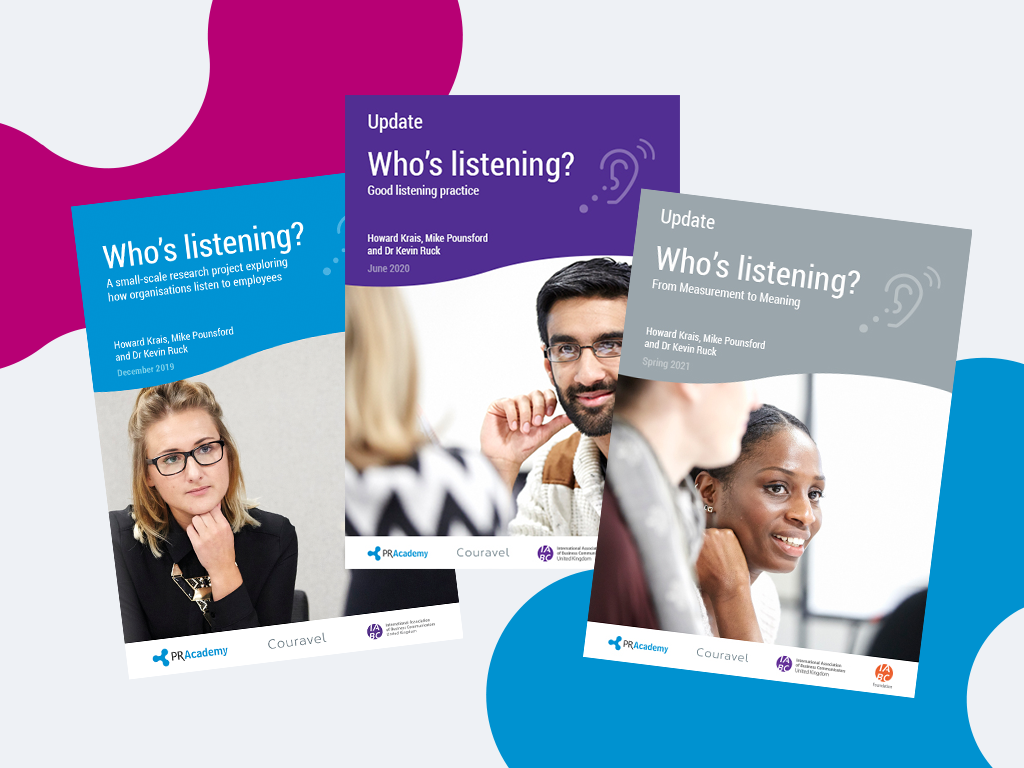Listening to employees: from measurement to meaning
Surprisingly, 77 percent of respondents said they rarely or never used focus groups – a listening method where deep insights were often cited as benefits in open comments in the survey.
Who's Listening? Report 2021 Update
Report key findings:
- Listening is key to developing new working practices
- There is an over-reliance on surveys and minimal use of focus groups that provide deep insights
- The potential for digital listening is significant
- Leadership listening is more strongly associated with positive outcomes than line manager/supervisor listening

We respect your privacy and handle your data with care. Please see our privacy policy.
Thank you for downloading this report. Your download should start immediately.
If you asked us to keep you up to date with new guides and the latest industry insights, you will receive an email shortly asking you to verify the address we need to send them to.


